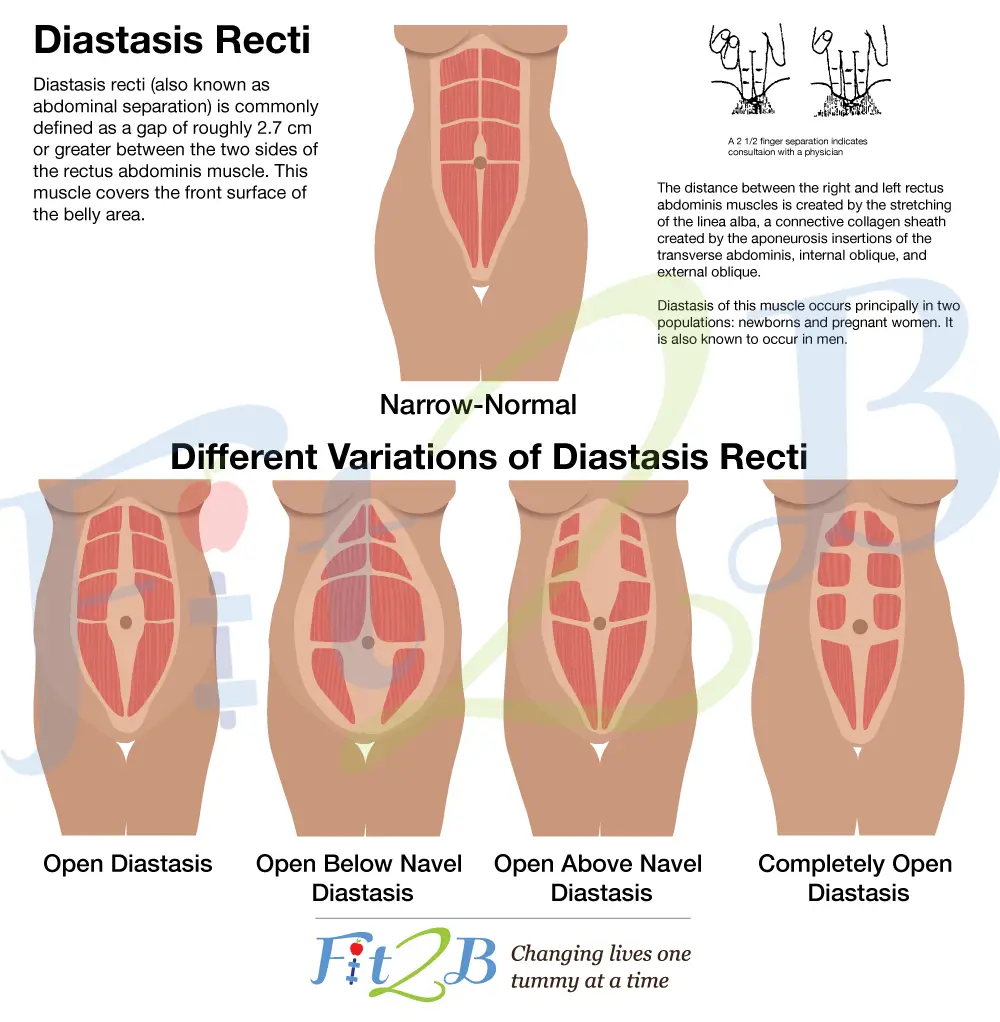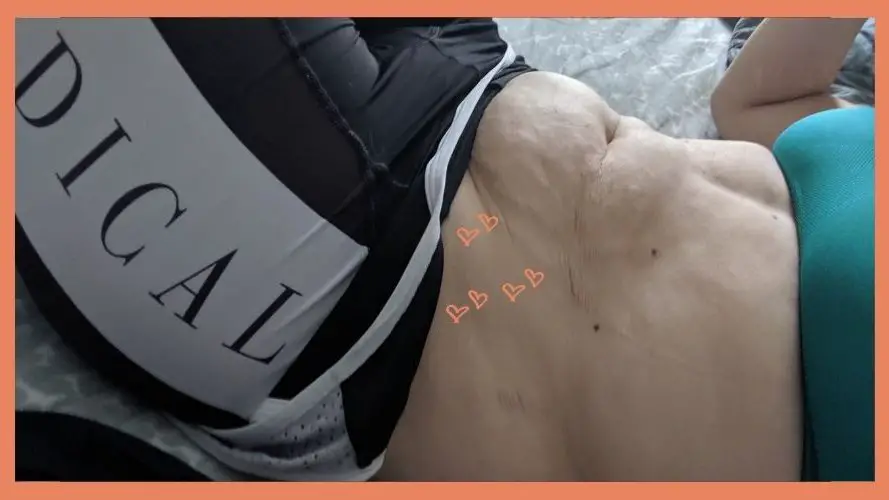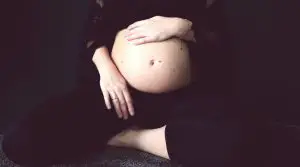Many women worry that pregnancy will ruin their bodies, especially their abs. One of the culprits behind “mummy tummy” is sometimes diastasis rectus abdominis, which is a thinning and widening of connective tissue that holds the two sides of your abdominal wall together.
It is usually a separation of more than two centimeters. Reinpold, W., Köckerling, F., Bittner, R., Conze, J., Fortelny, R., Koch, A., … & Stechemesser, B. (2019).1Classification of Rectus Diastasis—A Proposal by the German Hernia Society (DHG) and the International Endohernia Society (IEHS). Frontiers in surgery, 6, 1.
It is seen in up to 100% of pregnant women, and can remain separated in 35% to 60% of women in the immediate postpartum period. Mota, P., Gil Pascoal, A., & Bo, K. (2015).2Diastasis recti abdominis in pregnancy and postpartum period. Risk factors, functional implications and resolution. Current Women’s Health Reviews, 11(1), 59-67.
Abdominal muscle separation is present at the end of every pregnancy to varying degrees depending on genetics, exercise style, environment, support, nutrition, labor and birth outcomes, and several other factors.
It’s an important piece of postpartum recovery to consider in light of a study reported in March 2017 by Gitta et al that showed a significant difference in the quality of life, presence of low back pain, and urinary incontinence (i.e., leaking pee during coughing, sneezing, etc) between those without diastasis and those with it.
However, much can be done to minimize diastasis recti before and during pregnancy.

Expert note
Though diastasis recti related to pregnancy is a fairly common condition, proper advice from a doctor or physiotherapist regarding specific therapeutic exercises and early treatment can definitely help to reduce it and aid recovery.
How to minimize diastasis recti during pregnancy
- Sit and stand in good posture: Biomechanist Katy Bowman, founder of Nutritious Movement and author of many books including Move Your DNA, teaches that mama and baby alignment are connected. In other words, the way you position your pregnant body will affect how your baby is positioned, and that affects how your baby presses out on your abdominal and down on your pelvic muscles. The way you sit and stand can raise or lower pressure inside your core which then puts more or less pressure on your already-stretched-out muscles. The less pressure pushing outward on your abdominal wall while it’s already working to hold a baby in place, the better!
- Splint your abs: According to Kelly Dean, core rehab specialist and founder of The Tummy Team in Camas, Washington, USA, splinting your abdominal muscles with a therapeutic grade binder that’s designed for pregnancy can help minimize diastasis during and after pregnancy. Wrapping the abs is an ancient tradition, but in modern times we understand that splinting shouldn’t be done without restorative, rehabilitative exercises. Otherwise a “crutch” and codependence effect may occur.
- Avoid elective cesarean section: Having a C-Section can save your life and that of your child’s. However, you should know that the incidence of diastasis was significantly higher in those who underwent cesarean section than in those who underwent vaginal delivery. Int Urogynecol J. 2020, Feb, Wang et al
This major surgery slices through the nerves and muscles of the abdominal wall, impairing the mind-body connection to the core, increasing the recovery time needed to return to full function and fitness after birth.
How to treat diastasis recti after birth
- Find a specialist: Find a good, qualified, physical therapist who specializes in postnatal core recovery, diastasis rectus abdominus, and pelvic floor rehab. Plan to see one before your 6-week check up and do the gentle, restorative exercises they prescribe. A good PT can provide the care you need to heal your abs faster after birth. Often – not always – splinting your abs will be recommended by your physical therapist.
- Use tummy safe fitness: The exercise choices you make after having a baby should support your core muscle’s recovery, not slow it down or make it worse. Being postpartum is forever after you’ve had a baby, and you will need new movement strategies to accommodate the changes in your body. The way you approach exercising with a postnatal body must be protective of your healing abdominal and pelvic muscles, and you’ll need to be strategic in your progressive return to fitness. Visit Fit2B where hundreds of diastasis-aware exercise videos are available to help you workout while dealing with your diastasis recti.
Conclusion
Diastasis recti needn’t be an impediment to movement or high-quality life. It’s minimizable and treatable; surgery might also become an option if non-surgical methods are exhausted.
Left untreated, it can sometimes resolve on its own after a while.
Utilizing physical therapy, nourishing your body with proper nutrition and rest, exercising in TummySafe ways that don’t place additional pressure on it, and supporting your core with a splint can all help the connective tissue in your abs thicken and narrow over time.





